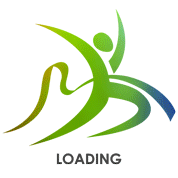
Copyright © 2021 - 2025
Sportsmatik.com. All Rights Reserved

Paratriathlon players are classified into five classes based on the type of disability:-
Athletes in this class have mobility impairments like muscle power, hypertonia, limb deficiency, ataxia or athetosis that prevent them from running or pedaling a bicycle. Athletes must have a classification assessment score of up to 6400 points. They must use a recumbent handcycle on the cycling phase and a racing wheelchair in the running phase.
Athletes in this class have mobility impairments like muscle power, hypertonia, limb deficiency, ataxia or athetosis and have a classification assessment score of up to 4549 points. During the cycling and running phases, amputees may use approved prosthesis or other supportive devices.
Athletes in this class have mobility impairments like muscle power, hypertonia, limb deficiency, ataxia or athetosis and have a classification assessment score from 4550 to 4949 points. During the cycling and running phases, amputees may use approved prosthesis or other supportive devices.
Athletes in this class have mobility impairments like muscle power, hypertonia, limb deficiency, ataxia or athetosis and have a classification assessment score from 4950 to 5570 points. During the cycling and running phases, amputees may use approved prosthesis or other supportive devices.
Athletes in this class have partial or total visual impairment. IPC/IBSA defined subclasses B1, B2 and B3 are all grouped in this class. Athletes must have a sighted guide of the same nationality and gender throughout the race and must ride a tandem bicycle during the cycling phase.

 Loading...
Loading...
Kindly log in to use this feature.
